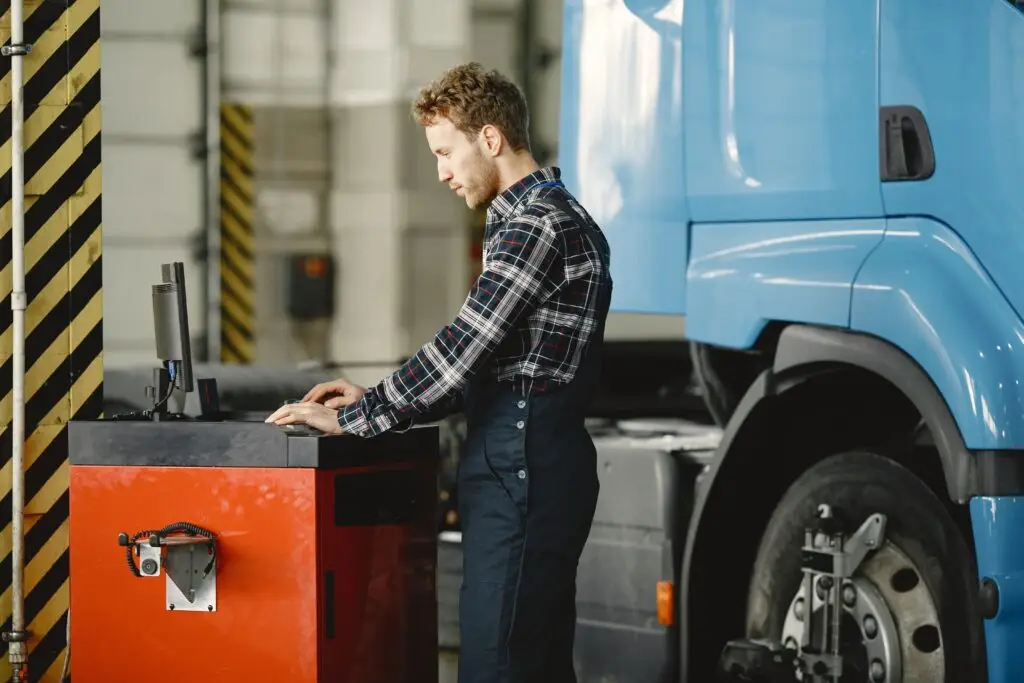In-house vs third-party workshops: managing both in one system

Every fleet is different. Some rely entirely on internal mechanics with a dedicated workshop and service bay. Others outsource all repairs and servicing to trusted vendors. Many do a bit of both. But no matter how your operation is structured, one thing is constant: you need a clear, consistent way to track what work is being done, by whom, and when.
For mixed workshop models, that can get messy quickly. Paper jobcards, emailed invoices, whiteboards in the service shed, and phone calls to contractors all leave too much room for things to get missed or duplicated. If you’re trying to stay compliant, control costs, and keep assets moving, that scattered workflow becomes a risk.
Gearbox simplifies it. The system was built to handle real-world operations, including fleets that split their maintenance between in-house teams and third-party providers. Whether your job is to turn spanners or coordinate subcontractors, Gearbox gives you the structure, visibility, and traceability to do it right.
Let’s talk about how that actually works in the day-to-day.
In-house workshops: lots of control, but tough to scale
In-house workshops tend to have their own set of challenges. Jobs are logged by hand or verbally, mechanics are working from memory or scratch notes, and nothing gets entered into a central system until days later, if at all. It’s common to see workshop leads keeping everything in their heads or on the back of a clipboard. While this might work for a handful of vehicles, it doesn’t scale. As your fleet grows, or as you start managing compliance more seriously, the cracks start to show.
Gearbox gives you digital jobcards, linked directly to each asset. When a vehicle comes in, you can schedule work, assign it to a mechanic, track the job as it’s being done, and close it off when it’s complete. Every step is time-stamped and recorded. You can include fault reports, inspection results, and parts used, all in one place. No more chasing people for updates or wondering whether the brakes were actually replaced.
For third-party work, the challenges are different. You might be sending vehicles out to multiple contractors. Some are great with documentation. Others not so much. Invoices come in days after the job is done, and you’re left trying to match them to fault reports or maintenance logs. If someone asks what was done to a truck last month, you’re searching email chains or waiting for a call back.
With Gearbox, you can create a work order for a third-party job just like you would for internal work. You log the issue, note the vendor, and track the status. When the job is complete, you can upload the contractor’s invoice or service report directly into the system. That way, your records stay complete, even if the contractor’s paperwork isn’t. You’re no longer relying on memory or scattered files to track critical maintenance work.
One of the biggest advantages of managing both in-house and outsourced work in one platform is how much easier it becomes to see the full picture. You’re not just looking at a pile of tasks. You’re seeing trends. Maybe your internal team is consistently faster on routine servicing, while third parties are more efficient with diagnostics and specialist repairs. Maybe certain vendors always flag more faults than others, or certain jobs get delayed more often when outsourced.
This kind of visibility helps with planning, budgeting, and compliance. You know where your time and money are going. You can see which jobs are falling behind, which assets are costing the most to maintain, and where you might need to invest in training, tools, or better vendor relationships.
There’s also the compliance piece. Auditors don’t care who did the work. They care whether the work was done, whether it was logged, and whether it can be verified. Gearbox creates an audit trail for every job, no matter who performed it. If your contractor replaces the brakes, you upload their invoice. If your mechanic completes a repair, it’s logged in the system. Everything links back to the asset. Everything is time-stamped. Everything is searchable.
In a regulatory environment where maintenance records are often the first thing reviewed, this isn’t just nice to have, it’s essential.
Another area where Gearbox helps is with parts and inventory. In-house workshops usually carry their own stock. Third-party vendors might supply their own. Gearbox lets you track both. You can manage your internal parts inventory, track usage by job, and reconcile costs. At the same time, you can record parts billed by contractors and compare pricing over time. This gives you a clearer sense of total cost per asset and helps you make informed decisions about where to source repairs.
For teams that are growing, or for those starting to take a more professional approach to maintenance, this kind of structure becomes a real advantage. Gearbox gives workshop managers, operations leads, and compliance officers a single place to manage everything. No matter where the work is done, it’s all captured in one system.
The goal isn’t to change how you work. It’s to make what you’re already doing easier to track, easier to review, and easier to scale. If your internal team handles some jobs and contractors handle the rest, Gearbox doesn’t force you to choose. It supports both, clearly and simply.
You can assign jobs, attach notes, track parts, upload invoices, review history, and stay ahead of compliance, all in one platform that fits your fleet.
Managing in-house and third-party maintenance doesn’t have to be a juggling act. With the right system in place, it’s just another part of the workflow.
If you want to see how other fleets are using Gearbox to manage both workshop models in one system, we’d be happy to show you how it works.
